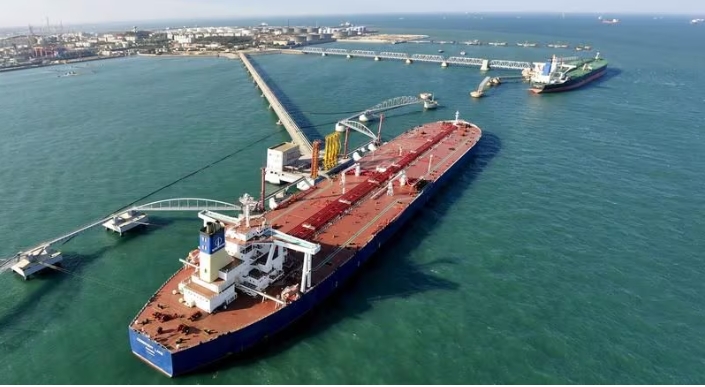
The world's top-importing region saw arrivals of 28.57 million barrels per day (bpd) in January, up from 27.03 million bpd in December, according to data compiled by LSEG Oil Research.
China, the world's biggest crude buyer, imported 11.31 million bpd in January, slightly below the 11.48 million bpd in December, but well above the 10.24 million bpd from the same month in 2023, according to LSEG.
It's likely that China's refiners were encouraged to keep imports at robust levels given the lower oil prices prevailing when cargoes were arranged and the release of most of their annual import quotas in one tranche at the start of 2024, rather than the usual practice of several instalments.
China's imports from Russia via pipeline and tankers were 1.94 million bpd in January, making it the biggest supplier of crude, edging out Saudi Arabia's 1.68 million bpd.
However, it's worth noting that arrivals from Saudi Arabia were up from December's 1.38 million bpd, which suggests that the world's biggest exporter is making an effort to regain market share in China.
It's likely that China's imports from Saudi Arabia will rise further in February after the kingdom cut its official selling prices (OSP) for its flagship Arab Light crude for February-loading cargoes to the lowest in 27 months.
It's not just China buying more Saudi oil, with Asia's imports rising to 5.63 million bpd in January, up from 5.46 million in December.
India, which had turned away from Saudi crude in favour of discounted barrels from Russia, is said by trade sources to be seeking more cargoes from Saudi Arabia in February.
Asia crude oil imports vs Brent price
INDIA HIGH
India, Asia's second-biggest importer, is on track for record imports in January, with LSEG tracking arrivals of 5.33 million bpd, up from 4.65 million bpd in December.
Russia remains India's top supplier with 1.43 million bpd in January, up from 1.34 million in December, with Iraq in second place at 1.34 million bpd, up from 1.10 million bpd in December.
With India's economy performing strongly and rising profit margins for refined fuels in Asian markets, the country's refiners are likely to continue to demand high crude volumes to take advantage of robust domestic and export markets for fuels.
The question for the market is whether Asia's strong start to the year for crude imports is likely to sustain.
It's likely that February will also see robust imports, largely because cargoes arriving this month will have been purchased when crude prices were soft.
Global benchmark Brent futures hit a 5-1/2 month low of $72.29 a barrel on Dec. 13, having been trending lower after hitting the 2023 high of $97.69 in late September.
This means that cargoes arriving in February were likely arranged when crude prices were declining.
However, Brent started rallying from mid-December onwards, and a pullback in January amid global demand concerns was reversed in recent weeks as fears mounted over shipping disruptions through the Red Sea caused by missile and drone attacks by Yemen's Iran-aligned Houthi group.
Brent reached a high so far this year of $84.80 a barrel on Jan. 29, and ended at $81.71 on Wednesday.
Higher prices may crimp some import demand in China, which can turn to inventories if it wants to keep refinery processing steady.
India is also a price-sensitive buyer, but it's likely to take several months of stronger oil prices to slow domestic demand enough to prompt lower imports.
Overall, Asia's strong start to 2024 for crude imports likely will extend for the rest of the first quarter, but what happens beyond that will largely depend on the trajectory of oil prices.